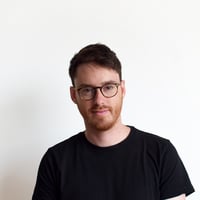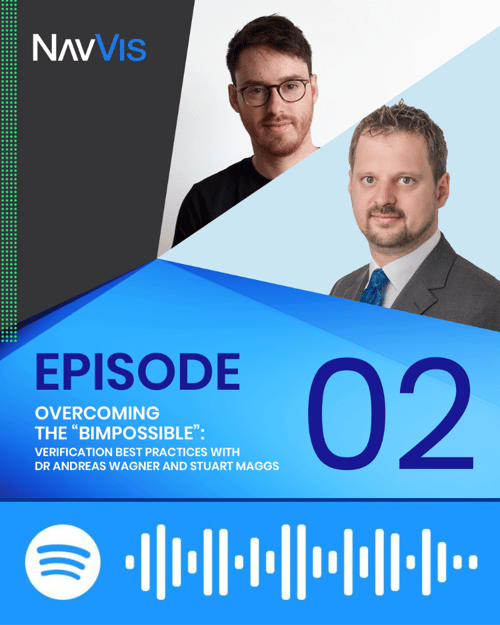“Scanning Realities" is the new podcast series that provides laser-focused insight into the current geospatial landscape and beyond, exploring industry challenges, market changes, and future trends.
If you’ve ever wondered where reality capture technology is taking the world of verification, look no further. On Episode 2, we discuss the challenges AEC professionals face when conducting verification, looking at the current roadblocks to achieving it and how new tools and technologies are disrupting traditional approaches.
Hosted by Michael Dutch, Customer Success Team Lead at NavVis with a background in Geoscience and many years in both the AEC and Oil and Gas sectors, this episode features industry-leading insight from two exceptional guests:
 |
.jpeg?width=200&height=200&name=AWagner%20(5).jpeg) |
| Stuart Maggs | Dr. Andreas Wagner |
| Architect and CEO/Co-Founder of NASKA.ai | Managing Director at Angermeier |
A glimpse into the discussion
“Validation is understanding the comparison between reality and what was planned within a time period that makes sense for your project,” explains Stuart Maggs. “Doing so means you’re able to make better decisions and de-risk the project’s delivery.”
“Imagine you're building a huge, complex structure. You have millions of individual elements that are being installed in time and space – it becomes very complicated. How do you actually validate what has been installed versus what you planned?”
In most cases, the hard truth is you don’t.
“It's quite likely that only 5-10% of the work is actually being validated against the plan,” says Stuart. “That's kind of insane. You want to understand what's been built and what hasn't. Otherwise, if you can't measure it, how do you manage it?”
This is the exact challenge AEC professionals are looking to address.
As Dr. Andreas Wagner explains, “Technology has not only enabled us to capture more data than ever before but also from places where previously it would’ve been incredibly difficult to access. But collecting this data is only part of the problem, the other is how you reliably compare all the variety of documents that have been generated.”
“There are some good cloud solutions, but many are still limited by a number of problems. Sometimes people are wary about sharing data on a cloud platform, while for others, the problem is that platforms can only handle classic PDF files or similar formats. So, there’s still a lot of projects which are completed through very low data exchange, such as PDF or single drawings.”
That’s why AEC professionals are driving towards tools and processes that optimize these efforts. “It's incumbent upon us to inject information and insight back into the existing workflows in formats that can be ingested, to empower the people already working on those projects.”
The digital transformation of reality capture and verification is a growing need within the industry. Most projects are heavily reliant on a small number of experts, and ensuring those individuals can not only work as optimally as possible but can effectively pass that knowledge on so the learnings from each project aren't lost, is essential.
As Dr. Wagner explains, “Because of the shortage of skilled workers, we need more optimization with the limited number of skilled people out there. They have to adjust to the survey, look after the project, and make sure the computers are doing what they’re supposed to, and the algorithms are running in the right direction. And I think this is where I hope that technology can support our processes and our main task.”
Tune in on your favorite platform!

Don't forget to subscribe and be the first to know when our third episode is out – next topic in line: collaboration & handover. Sign up for our global newsletter so you can be the first to listen:


